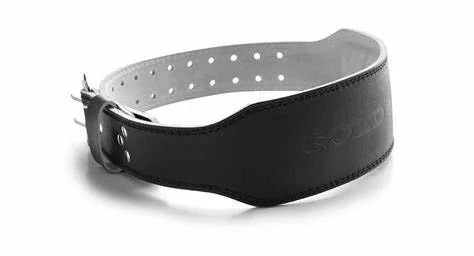Definition
A weightlifting belt is a thick, leather or nylon belt worn tightly around the abdomen to provide support and stability for the spine and core muscles during heavy lifting.
Explanation
- Weightlifting belts act as an external girdle to increase intra-abdominal pressure and stiffen the trunk. This helps maintain a neutral spine position during exercises like squats, deadlifts, overhead presses, and cleans.
- Belts are thought to reduce risk of back injury and enable the lifting of heavier weights by supporting the muscles of the core. Proper lifting form should still be maintained.
- Weightlifting belts are often used during maximal lifts, training with heavier weights, or when fatigued. They are commonly seen in powerlifting and strongman training.
Examples
- Wearing a belt during a heavy squat or deadlift set
- Using a belt for overhead presses or bent-over rows
Related Terms
- Bracing – Activating your core muscles to stabilize and protect your spine. Done by holding a neutral spine position and contracting abdominal and back muscles.
- Lumbar spine – Lower part of the spine between the thoracic spine and pelvis. Made up of 5 vertebrae (L1-L5). Important for movement and stability.
- Core stability – Ability to control position and motion of the core muscles like abdominals and back to protect the spine and transfer force.
- Powerlifting – Strength sport with 3 lifts – squat, bench press, and deadlift. Goal is to lift maximal weight in each exercise. Tests overall strength.
Common Questions
- When should I wear a weightlifting belt? Wear a belt when lifting near your max weight, doing heavy squats or deadlifts, or if you have existing back issues. Don’t rely on it for lighter lifts.
- How tight should I wear a lifting belt? The belt should be snug but not overly tight. You should be able to get your fingers under it while keeping your core braced.
- Can belts compensate for poor form? No, a belt can’t compensate for poor form. It’s meant to provide support, not correct technique problems. Still maintain proper form.
Do Not Confuse With
- Back support belt – Provides warmth and compression but less spinal stability.
69
/ 100
SEO Score
Thank you for reading this post, don't forget to subscribe to our free newsletter
!
